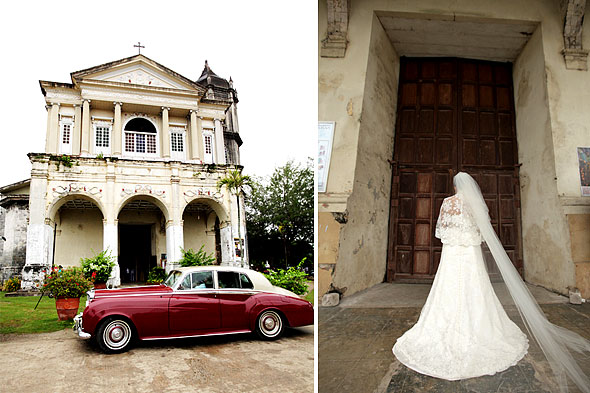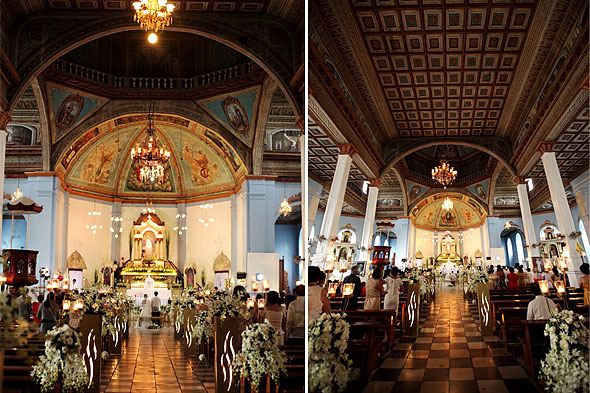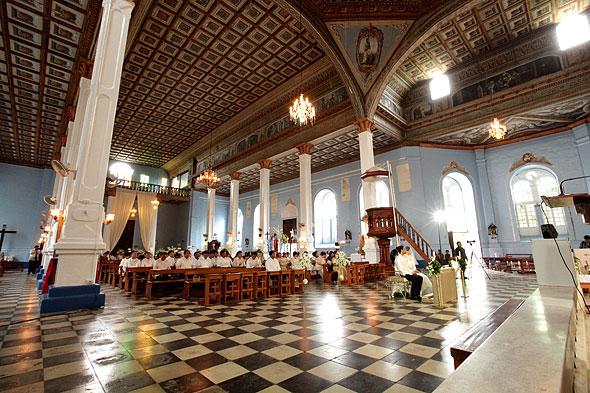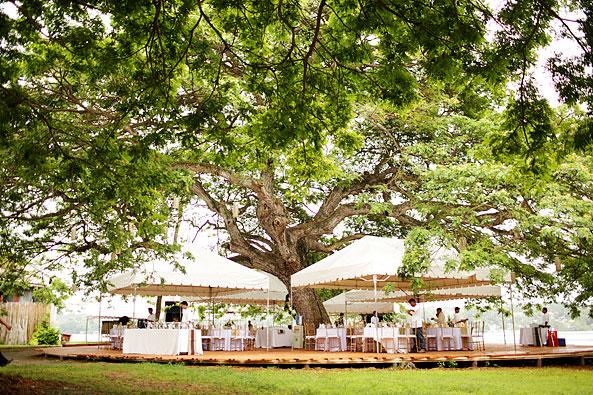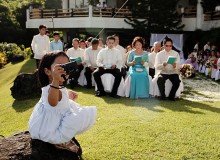Intriguing Dauis Church in Panglao, Bohol
Bohol has been a favorite destination of tourists both local and domestic. It is famous for its natural wonders especially the Chocolate Hills, and the tarsier. Central Visayas’ jewel of an island is also known for its people – not only for reputedly being the Ilocanos of Visayas (for their “tight-fisted” with money), but for being religious as well. This is obvious as one notices those old-looking churches as one goes around the island. Who doesn’t know of Baclayon Church, and nearby Alburquerque church? And what about Loboc Church, famous not only for being the home of the Loboc Children’s Choir, but also for fronting, as if standing defiant to, that unfinished bridge that leads to nowhere? But one of the most intriguing of Bohol’s churches is one that is located in that island known for its white sand beaches – Panglao Island.
The island of Panglao, the second largest island in this archipelagic province, is actually comprised of two municipalities – Panglao and Dauis. The latter faces Tagbilaran City. As one looks over across the narrow channel that separates Panglao island from mainland Bohol, or while crossing either of two causeways that cross this channel, one can glimpse a tower that unmistakably marks a church. This is Dauis church, locally known as Señora de la Asuncion. Its patroness is Our Lady of the Assumption, and its feast day is on August 15th. The church is located along Panglao Island’s coastline, hard to miss indeed for one on the road.
History has it that the Jesuits who had been mainly residing in Loboc transferred to the seaside town of Dauis. In the early 1750s, the Jesuits built a church with a convent. Then, Augustinian Recollects took over the Jesuit missions after the latter were expelled from the Philippines in 1768. A year later, the Recollects finished another church made of bamboo and wood, but which was unfortunately gutted by a fire in 1795 and had to be replaced. The present church is actually the fifth and was started in 1863 by the Recollect priest Fr. Julio Saldana. In 1884, a part of the church collapsed and repaired, and there were attempts to erect a second tower. This was, however unfinished, as can be seen today. The church was finally completed – with the installation of the cross over the triangular pediment – by 1924. Like many other old churches, its walls are mostly made from coral stones.
Dauis Church is an interesting venue for a destination wedding. It is, after all, touted to be one of the most beautiful churches of Bohol. Different styles are fascinatingly present in its architecture, with influences of Gothic and basilica designs. The interior seems airy and bright with its high ceilings and blue-themed paint characteristic of churches devoted to the Virgin Mary. One also senses the church’s history upon sighting the wooden pulpit, the antique confessionals, and the intricate designs on the ceilings.
Another intriguing feature of the church is the presence of a well located at the foot of the main altar. This well was said to have sprung up miraculously after people who had sought refuge in the church during pirate attacks had run out of food and water. The water from the well has since then been noted for its healing power. What is mysterious about it, though, is that the well is a source of potable fresh water, even though the church is located along the seashore. Parish officials discourage selling water sourced from the well, as they insist that it is a blessing that is free for everyone and anyone who needs it.
The church makes for very attractive wedding photos. The couple would have several options in choosing a backdrop for those romantic moments: the façade, with its portico; the tall bell tower, which houses the second and third oldest bells in Bohol (both dated 1783, and with the oldest one in Calape town, dated 1690); the well-maintained checkered tiles of the interior; the hexagonal tower at the back of the church which probably served as a lookout; and even the tree-lined seafront just past the convent.
For reception parties, one option is to hold an al fresco affair on the lawn beside the church. Another is for the wedding party to cross the causeways back to Tagbilaran City. Other options include establishments that are a few minutes’ drive away, such as the Bohol Plaza hotel, which is located on a hillside and thus provides a magnificent view of Tagbilaran City and the sea; or Bohol Bee Farm with its organic delicacies. Farther away are the different beach resorts Panglao is known for.



